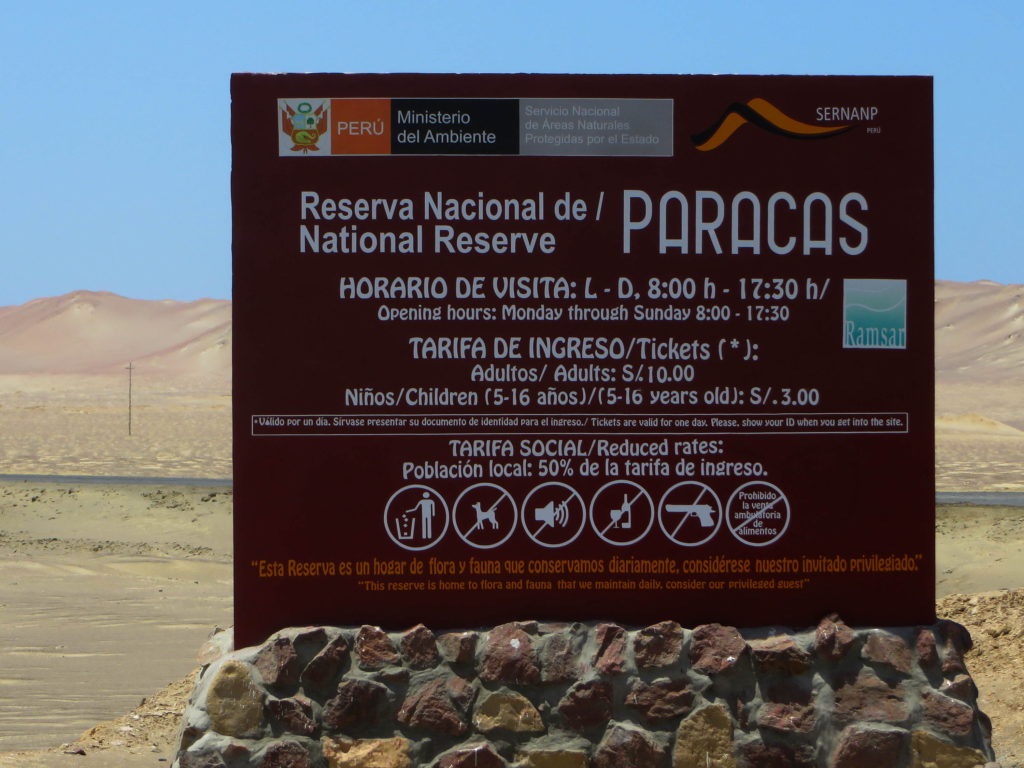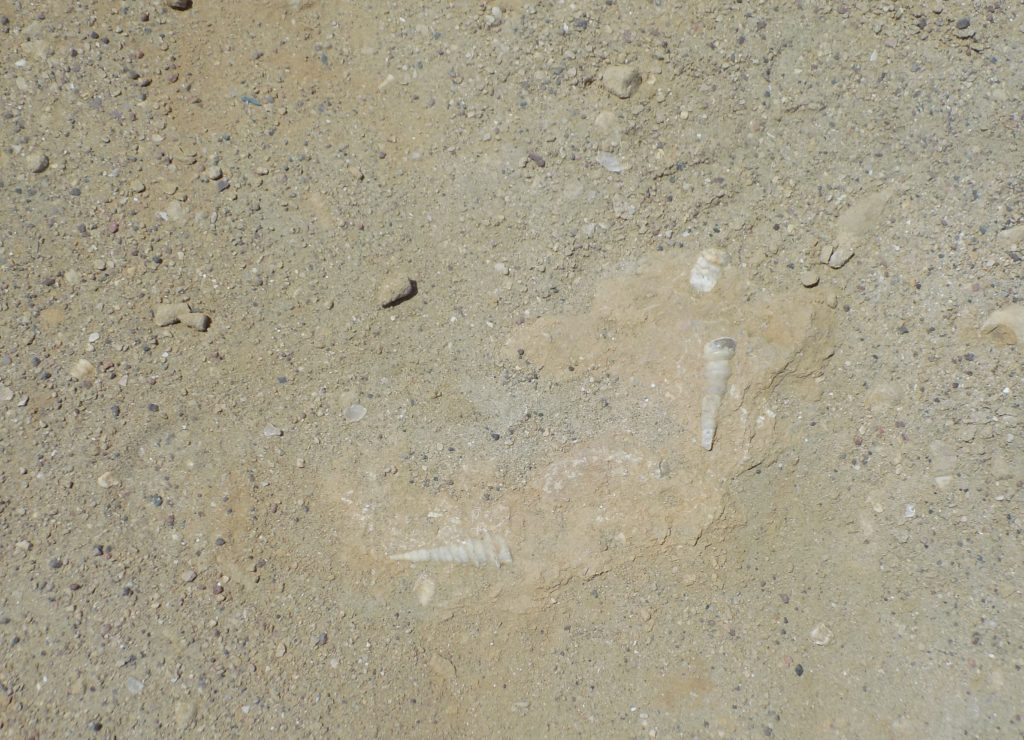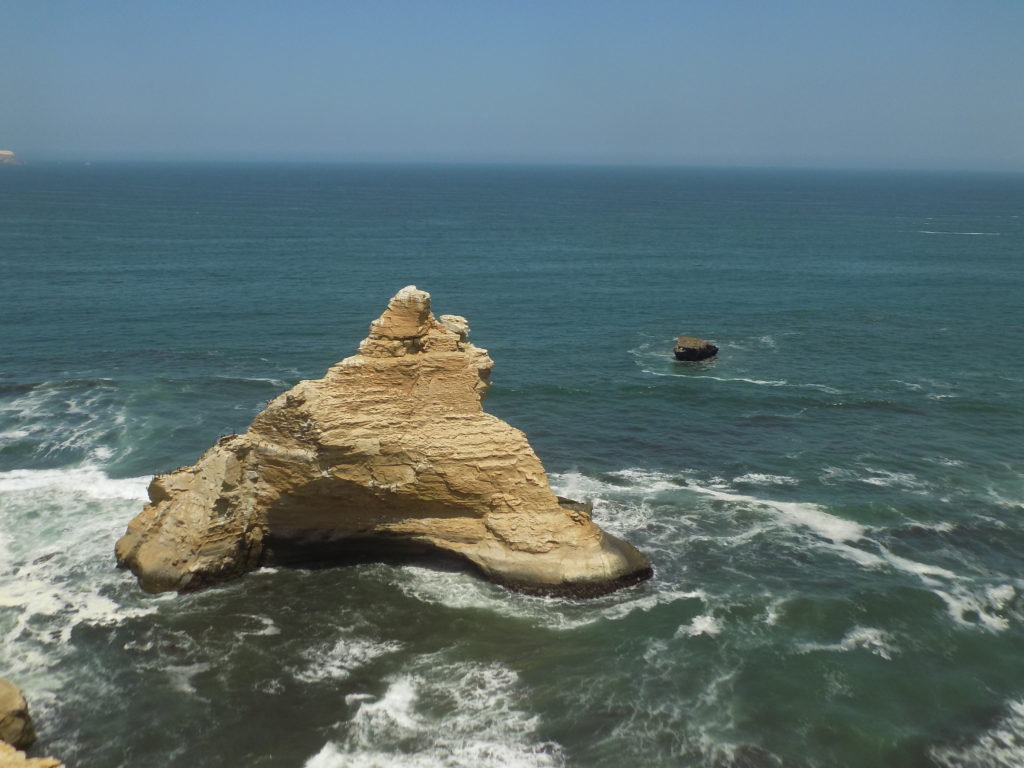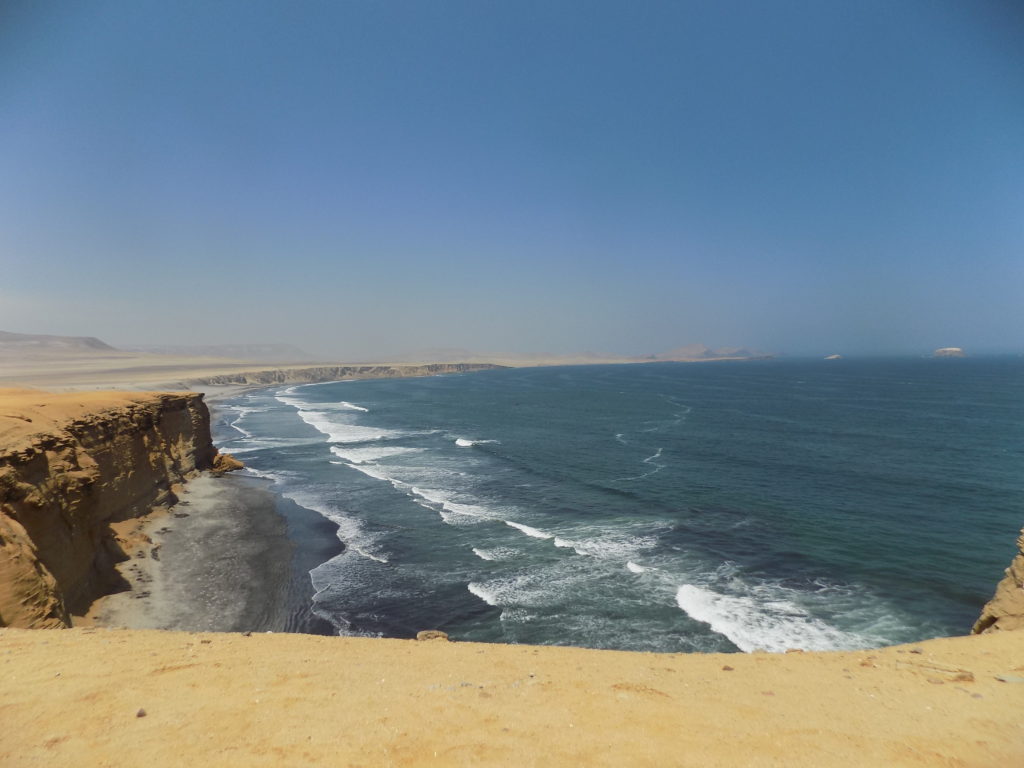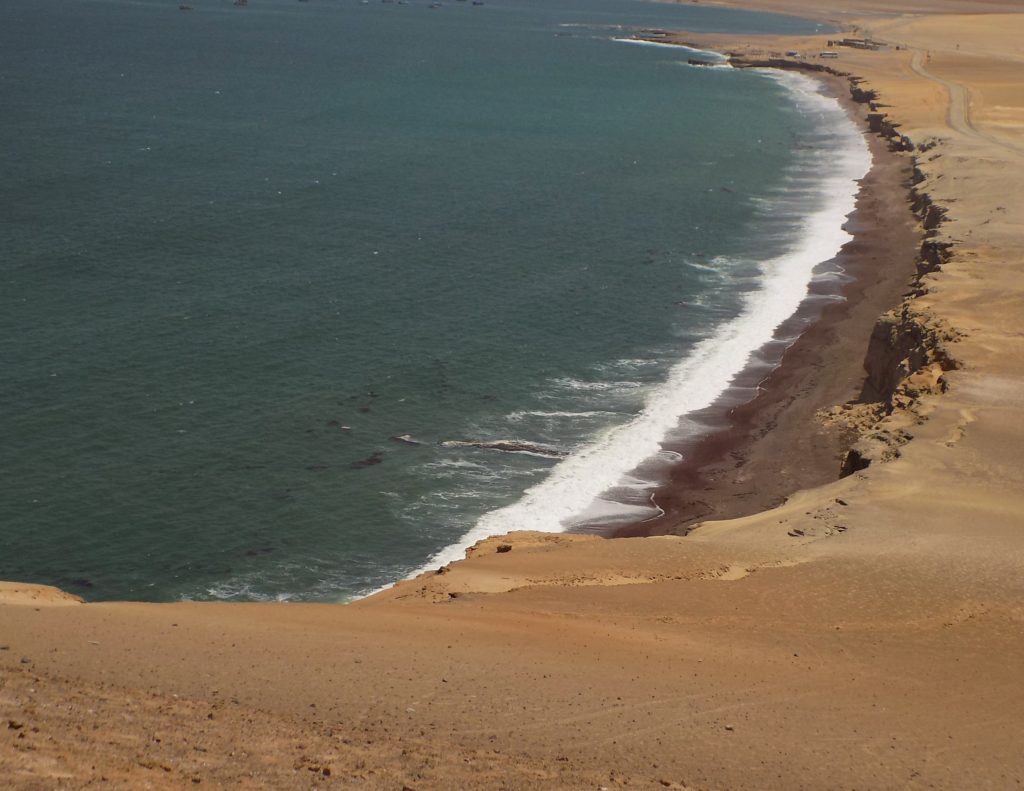I’ll start with the admission that today’s title is such a stretch than even I have to flag it as a terrible pun that has no connection to anything about the Paracas Reserve or about anything that happened on the day. Even though I’ll successfully ditch Paracas before day’s end, I’m still rattled by that pun. With that out of the way, I’ll return to the narrative of 26 March.
In case you’ve forgotten (or didn’t read the previous post), the boat excursion to the Islas Ballestas ended a bit before noon and this left me with a block of several hours of free time before the scheduled departure for my return bus ride to Lima. I first went to my room to collect my suitcase and found that the hotel staff at La Hacienda Bahia Paracas had capped off my lovely stay there by leaving a thank you note and a compilation CD called Paracas, una experiencia musical. On the way to the lobby to meet my driver, I stopped at the concierge’s desk to thank him for the CD.
You may recall from the previous entry that the Paracas National Reserve covers a total of 335,000 hectares (3350 square kilometers) and that while most of it is marine, its terrestrial expanse
spreads over more than 117,000 hectares and I was fortunate enough to have my driver offer to oversee a brief tour of that section of the reserve. He explained that we had time to see a few highlights and stop for lunch but that we wouldn’t have time to include a visit to the museum. Even with those limitations, the prospect certainly seemed more appealing than sitting for hours in the bus station.
Fossils, rock formations, and red beaches
I’m sure you recall that most of the west coast of South America is a desert. In few places is that more obvious than on the land of the Paracas National Reserve where its barren landscape starkly abuts the ocean. So arid is this land that biologists have identified a mere 14 species of herbaceous plants and lichens throughout the reserve. But it wasn’t always such a relatively desolate expanse.
The Earth’s land masses are anything but static. Mountains rise and fall. Continents form, break apart, drift away from one another, and re-form. Similarly, its oceans advance and retreat and it’s the result of a series of such advances and retreats we see at Paracas today.
The age range of the sedimentary rocks in the reserve span from the Devonian period some 325 million years ago (mya) – making them among the oldest in Peru – to the relatively young 60-million-year-old Tertiary sediments. The absence of intermediate sediments provides evidence of the ocean’s intrusion inland. It’s these younger sediments that came into play at the first stop we made – a walk where we
saw these well preserved Turritella woodsi fossils. Turritella woodsi is a marine gastropod that lived between 37 and 15 mya and while seeing them isn’t quite as dramatic as finding whale fossils at 1,500 meters above sea level, these fossil shells together with the 250 million year gap in sedimentary rocks allow geologists to estimate how long this area was last under water.
Our next stop was at the famous but now sadly diminished formation known as La Catedral or The Cathedral which is an outcrop of the Paracas Formation dating 40 to 35 mya. The visible strata typify the yellow rock color that predominates the area.
Still among the most dramatic formations visible in the swirling surf,
its visage was even more impressive before a 2007 earthquake collapsed a large part of it.
(Photo from Wamanadventures.com)
We made two final stops before breaking for lunch. The first was to look at the dramatic 30-meter-high cliffs rising along the area called Yumaque
and the other was to look over the famous Playa Roja or Red Beach.
Although the prevailing color in the area is yellow, one of the rock types found in the cliffs and concentrated in this stretch of beach is pink granodiorite. (Granodiorite is an intrusive rock or intermediate composition between granite and diorite. Hence its name.) It’s heavier grained than other types of rocks in the formation so when the different rocks erode out of the cliffs, the granodioritic sand is less likely to wash away – its presence a striking contrast to the rest of the reserve.
I had lunch at a small fishing harbor called Lagunillas Bay where, looking at the boats lining the bay, I ate what I imagined had to be the freshest ceviche of the trip. I expect there’s more to see in the reserve but this stop ended my brief visit.
I reached the station about an hour before the scheduled departure so this wait, combined with the long bus ride ahead, gives me a chance to share some more information about Peru’s capital city. Or you can skip the next section and simply take a look at the rest of the pictures from Paracas.
